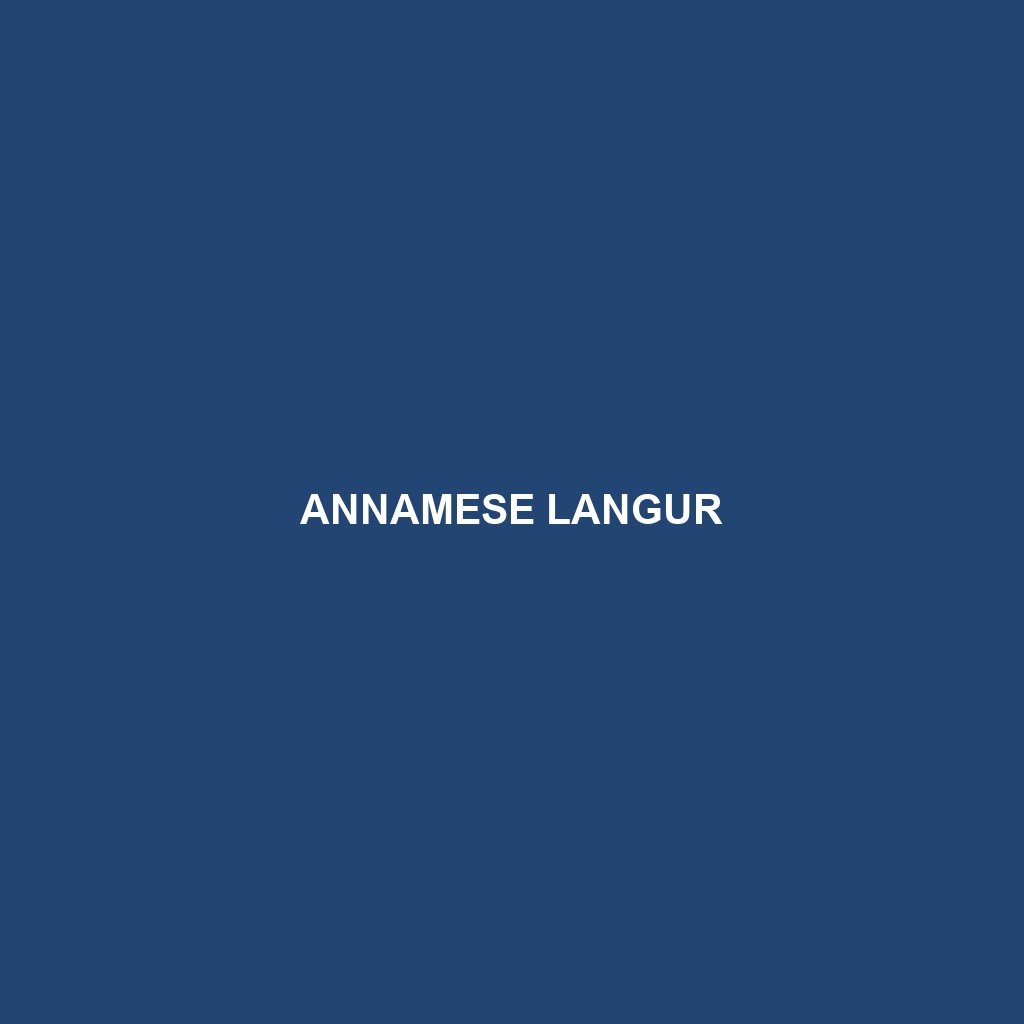Annamese Langur: A Detailed Description
The Annamese Langur (Trachypithecus margarita) is a rare and captivating primate species native to the dense forests of central Vietnam and eastern Laos. Known for their striking appearance and agile movements, these langurs are an essential part of their ecosystem’s biodiversity. Their elusive nature and the challenging terrain they inhabit make them a subject of great interest among conservationists and wildlife enthusiasts.
Physical Characteristics
Size: Annamese Langurs are medium-sized primates. Adults typically measure between 50-70 cm (20-28 inches) in body length, with a tail nearly as long, adding an additional 60-80 cm (24-32 inches).
Weight: Mature individuals weigh between 6-10 kg (13-22 lbs), with males generally larger and heavier than females.
Coloration: These langurs exhibit a beautiful, sleek coat that varies in coloration from dark grey to black on their back and limbs, with a lighter, almost silvery underbelly. Their faces are distinct with a dark mask surrounding their expressive, almond-shaped eyes.
Special Features: Notable for their elongated limbs and prehensile tail, Annamese Langurs are perfectly adapted for an arboreal lifestyle. Their hands and feet are equipped with long, dexterous fingers aiding in their remarkable climbing skills.
Behaviors
Social Interactions: Annamese Langurs are highly social animals, typically living in groups of 5-20 individuals. These groups are usually composed of one dominant male, several females, and their offspring. Social bonds within the group are strong, reinforced through grooming and play.
Feeding Habits: Primarily folivorous, their diet consists mainly of leaves, supplemented with fruits, flowers, and seeds. They possess a specialized, multi-chambered stomach to efficiently digest their fibrous diet.
Ecological Roles: As primary consumers, Annamese Langurs play a crucial role in their ecosystem by aiding in seed dispersal and maintaining the health of the forest vegetation through their feeding habits.
Habitats
Natural Environment: These langurs are found in tropical and subtropical forests, particularly thriving in mountainous regions. They prefer areas with dense foliage at various elevations, from lowland forests to higher altitudes.
Range: The species is predominantly located in central Vietnam, with some populations extending into eastern Laos.
Adaptations
Arboreal Lifestyle: Adapted for life in the trees, their long limbs and tail provide excellent balance and agility. They can leap significant distances between branches with ease.
Digestive System: Their complex stomach structure allows them to break down tough, fibrous plant material, extracting essential nutrients efficiently.
Conservation Status
Threats: Annamese Langurs face numerous threats, including habitat loss due to deforestation and human encroachment. Illegal hunting for traditional medicine and the pet trade also pose significant risks.
Conservation Efforts: Currently classified as Endangered on the IUCN Red List, conservation efforts focus on habitat protection, anti-poaching measures, and raising awareness about the species. Several NGOs and local governments are working together to establish protected areas and promote sustainable land-use practices.
Fascinating Fun Facts
Group Dynamics: The social structure of Annamese Langur groups is fascinating, with complex hierarchies and roles. Females often share the responsibility of caring for the young, a behavior known as allomothering.
Communication: These primates use a range of vocalizations, facial expressions, and body postures to communicate with each other. Their calls can vary from soft coos to loud alarm calls that warn the group of potential dangers.
Longevity: In the wild, Annamese Langurs can live up to 20 years, with some individuals in captivity living even longer due to the absence of predators and consistent food supply.
The Annamese Langur is a remarkable species whose survival hinges on continued conservation efforts and habitat preservation. By understanding and appreciating their unique characteristics and ecological importance, we can work towards ensuring their future in the wild.
